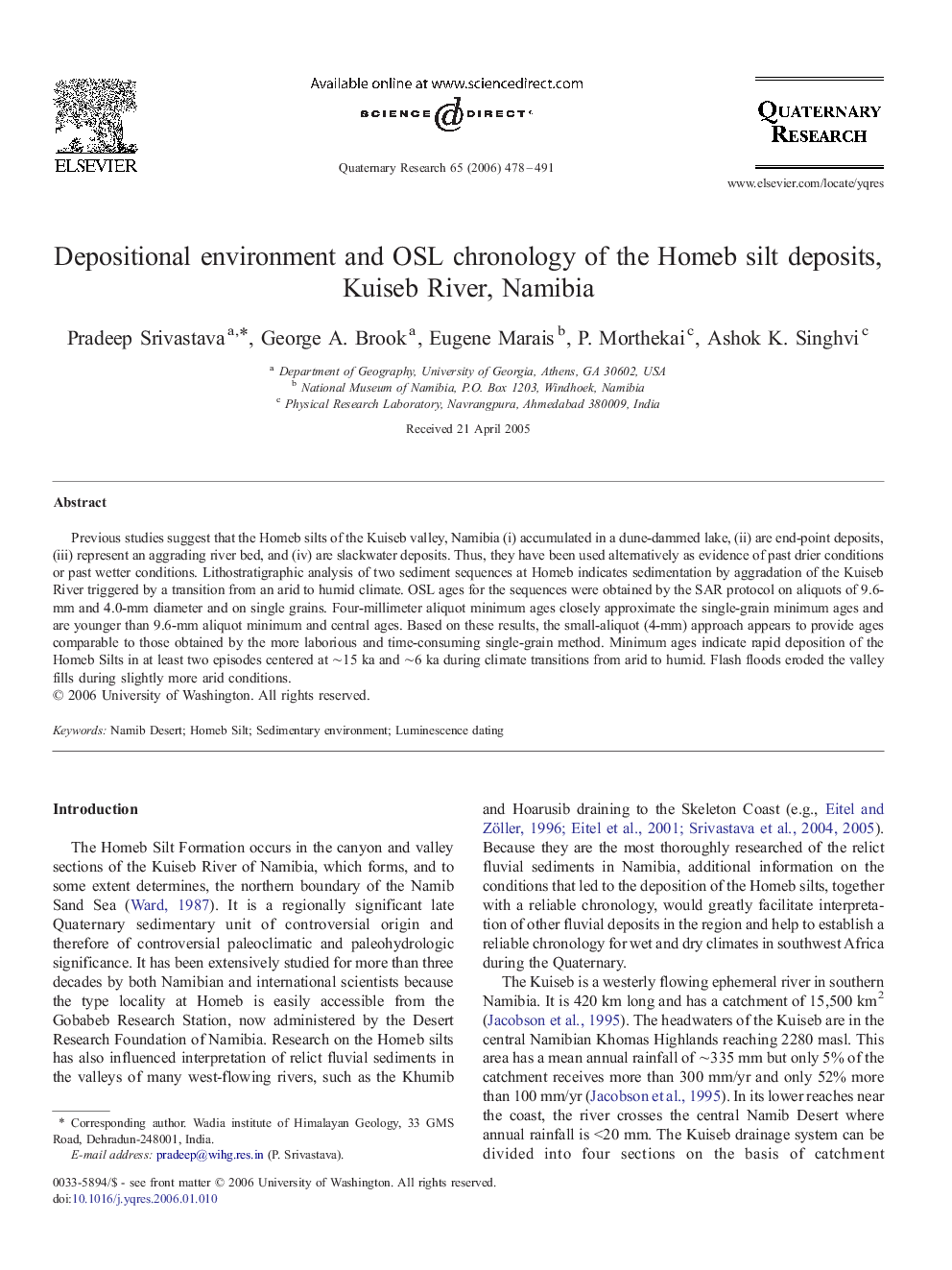| Article ID | Journal | Published Year | Pages | File Type |
|---|---|---|---|---|
| 1046247 | Quaternary Research | 2006 | 14 Pages |
Previous studies suggest that the Homeb silts of the Kuiseb valley, Namibia (i) accumulated in a dune-dammed lake, (ii) are end-point deposits, (iii) represent an aggrading river bed, and (iv) are slackwater deposits. Thus, they have been used alternatively as evidence of past drier conditions or past wetter conditions. Lithostratigraphic analysis of two sediment sequences at Homeb indicates sedimentation by aggradation of the Kuiseb River triggered by a transition from an arid to humid climate. OSL ages for the sequences were obtained by the SAR protocol on aliquots of 9.6-mm and 4.0-mm diameter and on single grains. Four-millimeter aliquot minimum ages closely approximate the single-grain minimum ages and are younger than 9.6-mm aliquot minimum and central ages. Based on these results, the small-aliquot (4-mm) approach appears to provide ages comparable to those obtained by the more laborious and time-consuming single-grain method. Minimum ages indicate rapid deposition of the Homeb Silts in at least two episodes centered at ∼15 ka and ∼6 ka during climate transitions from arid to humid. Flash floods eroded the valley fills during slightly more arid conditions.
